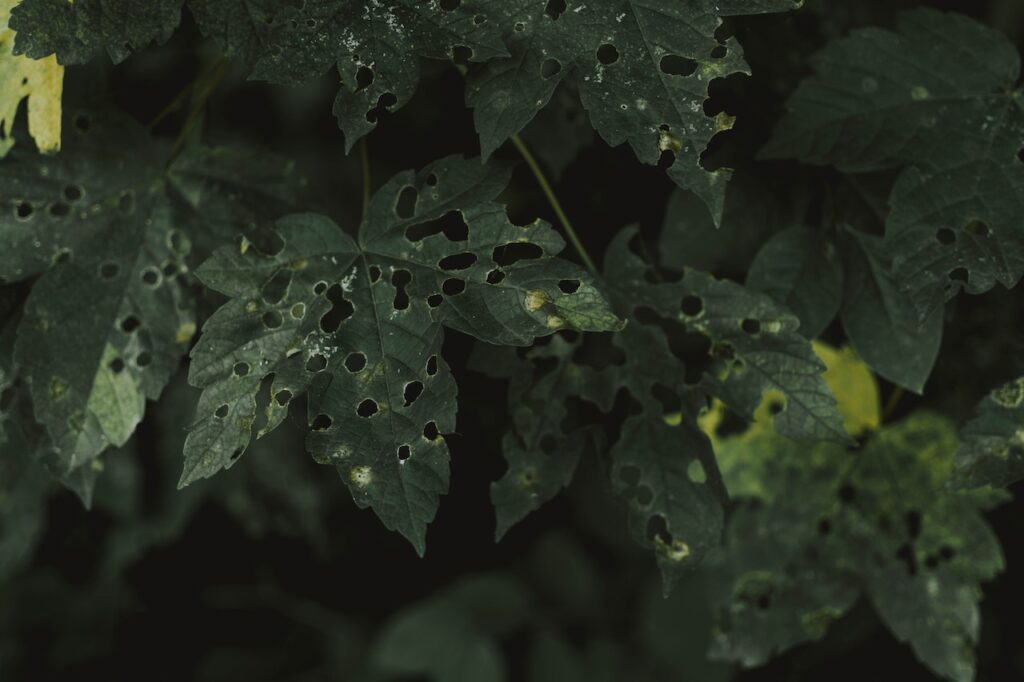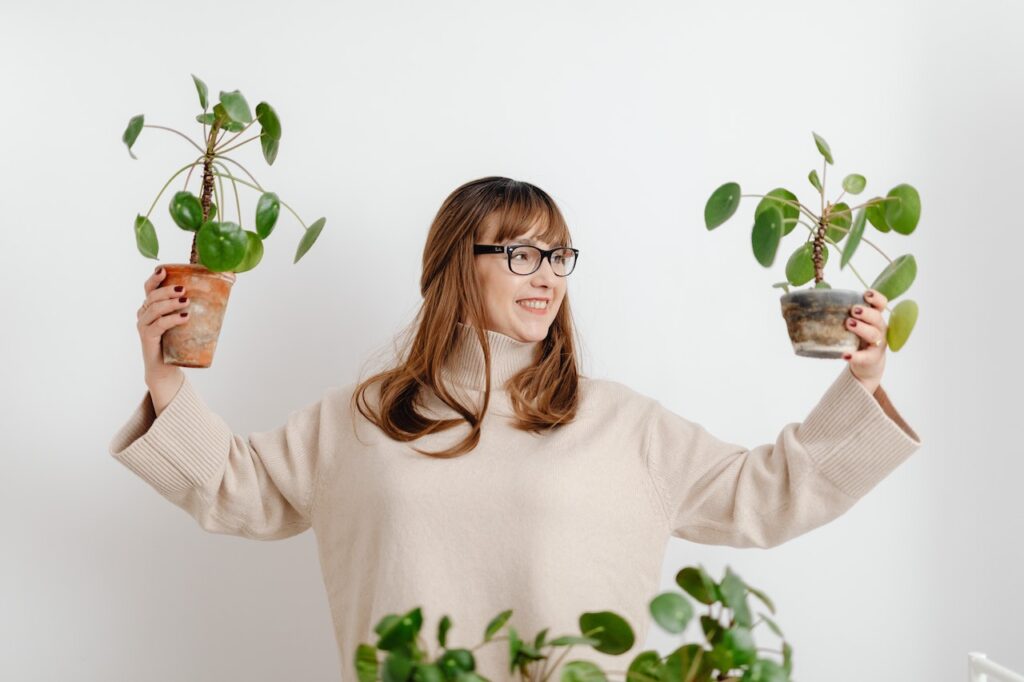Hello plant enthusiasts! We all love indoor plants for their beauty and the benefits they bring to our homes, but they can also attract unwanted visitors – Pests and Diseases. In this blog, we will discuss some common indoor plant pests and diseases, their identification, and prevention methods, including organic and chemical options. We’ll also provide guidance on how to deal with pest infestations and disease outbreaks.
Let’s get started!
Common Indoor Plant Pests
Spider Mites
Spider mites are tiny, eight-legged pests that are difficult to see with the naked eye. They typically appear as small, white, or yellowish specks on the leaves of plants. Spider mites can quickly reproduce, and a single plant can become infested in a matter of days.
Prevention:
Keep your plants well-hydrated, as spider mites prefer dry conditions. You can also mist your plants with water or use a humidifier to increase humidity levels. Avoid overcrowding your plants and ensure proper ventilation.
Treatment:
To get rid of spider mites, you can use insecticidal soap or neem oil. Simply spray the affected plants thoroughly, making sure to cover both the top and bottom of the leaves. You may need to repeat the treatment several times to completely eliminate the spider mites.
Mealybugs
Mealybugs are small, white, fluffy insects that can quickly spread throughout your indoor garden. They often appear on the undersides of leaves or in the crevices of the plant.
Prevention:
Inspect new plants carefully before bringing them indoors, and isolate them from your other plants for a few weeks to ensure they aren’t carrying any pests. Keep your plants well-hydrated and avoid over-fertilizing.
Treatment:
Use rubbing alcohol or insecticidal soap to get rid of mealybugs. Dab a cotton swab or cloth soaked in rubbing alcohol directly on the bugs to kill them, or spray the affected plants with insecticidal soap. Repeat the treatment every few days until the mealybugs are gone.
Scale Insects
Scale insects are small, oval-shaped insects that attach themselves to plant stems and leaves. They often appear as small, brown or yellowish bumps on the plant.
Prevention:
Keep your plants well-maintained and free from dust and debris. Inspect new plants carefully before bringing them indoors.
Treatment:
Use rubbing alcohol or insecticidal soap to get rid of scale insects. Dab a cotton swab or cloth soaked in rubbing alcohol directly on the bugs to kill them, or spray the affected plants with insecticidal soap. Repeat the treatment every few days until the scale insects are gone.
Fungus Gnats
Fungus gnats are small, black flies that lay their eggs in the soil of indoor plants. The larvae feed on the plant roots, causing damage and making the plant more susceptible to other pests and diseases.
Prevention:
Allow the soil to dry out between waterings, as fungus gnats prefer moist conditions. Avoid over-fertilizing and keep your plants free from debris.
Treatment:
Use a sticky trap to catch adult fungus gnats, or use a soil drench containing Bacillus thuringiensis israelensis (BTI) to kill the larvae. You can also sprinkle food-grade diatomaceous earth on the soil to prevent the larvae from developing.
Common Indoor Plant Diseases
Powdery Mildew
Powdery mildew is a common fungal disease that appears as a white or grayish powdery coating on the leaves of plants. It can quickly spread and cause damage to the plant if left untreated.
Prevention:
Ensure proper ventilation and air circulation around your plants. Avoid overcrowding and keep your plants well-hydrated.
Treatment:
Remove affected leaves and increase air circulation around the plant. You can also use a fungicide spray or a mixture of baking soda and water to treat powdery mildew. Be sure to follow the instructions carefully and repeat the treatment as needed.
Root Rot
Root rot is a fungal disease that affects the roots of plants. It can be caused by overwatering, poor drainage, or a buildup of salt in the soil.
Prevention:
Ensure proper drainage by using well-draining soil and pots with drainage holes. Avoid overwatering and remove any standing water from the saucer underneath the pot.
Treatment:
If caught early, you can often save the plant by removing it from the soil and cutting away any affected roots. Repot the plant in fresh soil and ensure proper drainage going forward. If the root rot is severe, you may need to discard the plant.
Leaf Spot
Leaf spot is a common fungal disease that appears as circular, brown spots on the leaves of plants. It can be caused by poor air circulation, overwatering, or overcrowding.
Prevention:
Ensure proper air circulation around your plants and avoid overcrowding. Keep your plants well-hydrated, but avoid overwatering.
Treatment:
Remove affected leaves and increase air circulation around the plant. You can also use a fungicide spray to treat leaf spot. Be sure to follow the instructions carefully and repeat the treatment as needed.
Organic vs. Chemical Options
When it comes to treating pests and diseases in your indoor garden, you have the option of using organic or chemical methods. Organic methods use natural ingredients, such as Neem oil or insecticidal soap, to control pests and diseases. Chemical methods use synthetic ingredients, such as pesticides or fungicides, to control pests and diseases.
Organic methods are generally safer for your plants and the environment, but they may not be as effective as chemical methods. Chemical methods can be more effective, but they can also be harmful to your plants and the environment if used improperly.
If you choose to use chemical methods, be sure to follow the instructions carefully and use the appropriate protective gear, such as gloves and a mask. If you have pets or small children, be sure to keep them away from the treated area until it is safe.
How to Deal with Pest Infestations and Disease Outbreaks
If you notice pests or diseases in your indoor garden, it is important to take action as soon as possible to prevent them from spreading. Here are some steps you can take:
- Identify the pest or disease. Use the information provided above to identify the pest or disease affecting your plants.
- Isolate the affected plant. Move the affected plant away from your other plants to prevent the pest or disease from spreading.
- Treat the plant. Choose an appropriate treatment method, either organic or chemical, and follow the instructions carefully.
- Monitor the plant. Keep an eye on the affected plant and surrounding plants for any signs of recurrence.
- Prevent future outbreaks. Take steps to prevent future outbreaks, such as maintaining proper hygiene, avoiding overcrowding, and ensuring proper ventilation and drainage.
Final Thoughts
By learning to identify common indoor plant pests and diseases and taking steps to prevent and treat them, you can keep your indoor garden healthy and thriving. Remember to choose the appropriate treatment method for your needs and follow the instructions carefully.
Take a look at some of our other Blogs here
Happy gardening!
Follow us on Instagram



